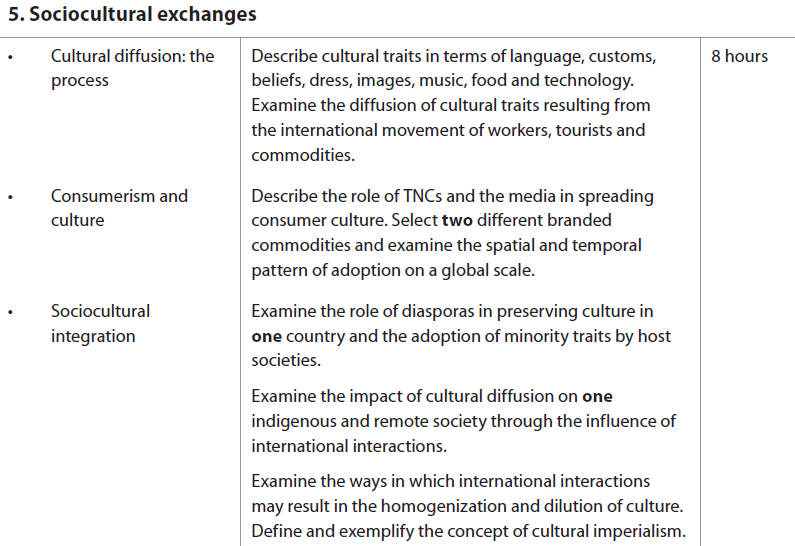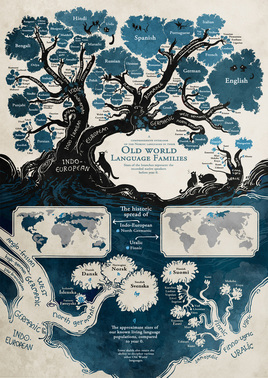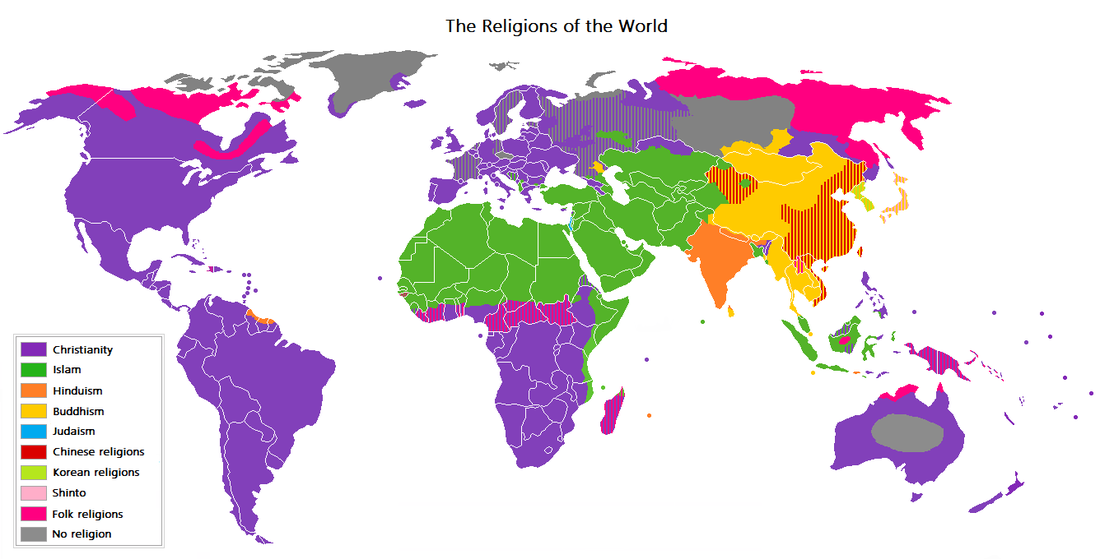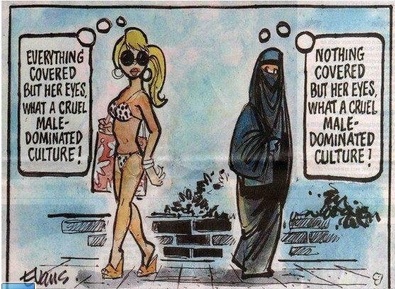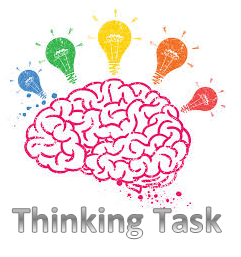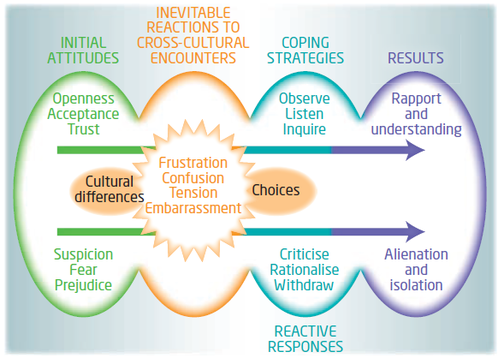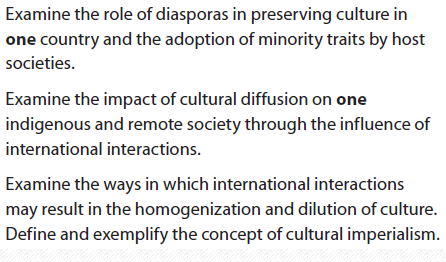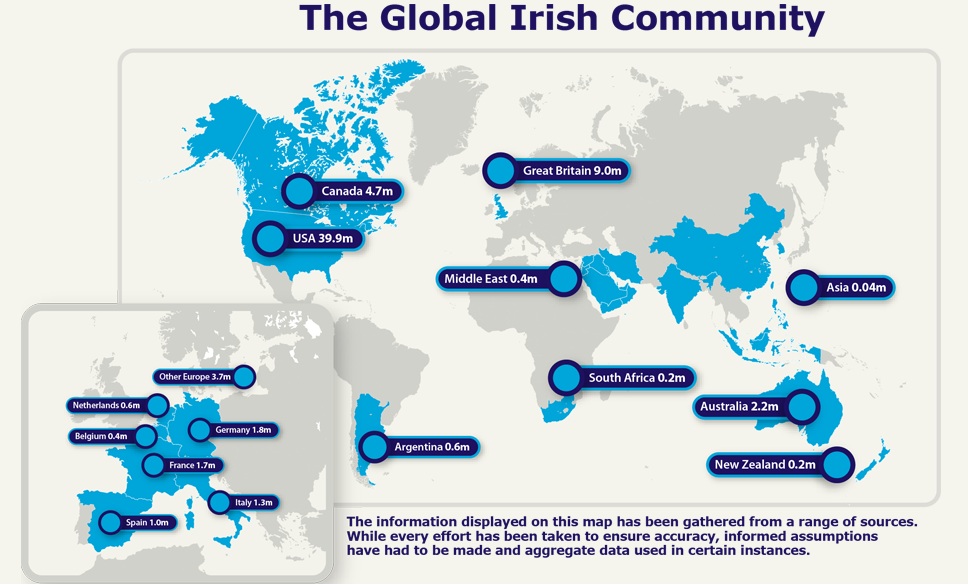Please help keep the Geographer Online a FREE resource
Socio-cultural Exchanges
Cultural DIFFUSION
Key Terms
|
|

Using the below subsections create a detailed mind map of each section of cultural traits. Do not forget to give examples.
Language
|
Language: It is estimated that there is over 6,500 spoken languages in the world today. Countries with a large number of indigenous groups tend to have the most languages. In Papua New Guinea that only has a population of about 5 million, there are over 800 languages. Other countries like Belgium (French and Flemish) and Canada (English and French) are officially bilingual, while others have one predominant language and some minority languages e.g. in France about 500,000 either speak Corsican or Breton. The most widely spoke language in the world is Mandarin, followed by English and Spanish. The UN has six official languages; Arabic, Mandarin, English, French , Russian and Spanish. However, despite the wide variety of languages, many languages are being lost. English has become an international language. It is the first language used in many international conferences, in business transactions, in media, and in transport. It is also the language most commonly taught as a second language. Despite many languages being lost, there is a fight to preserve others. In wales there have been many laws introduced to protect the language, including making it compulsory up to GCSE level in all Welsh school. 'Historic' assembly vote for new Welsh language law - BBC article.
(Source: Greenfieldgeography) |
Customs
|
Customs: These are common patterns of behaviour found with particular countries or regions that are then passed down through generations. Examples may include bowing to elders, not tipping, taking of shoes inside houses and celebrating certain days e.g. St. Patrick's (Paddy's) Day. Some of these customs may get diluted as young people see different behaviour in the media, while others may grow. St. Patrick's Day is a classic example. Not only are there now Irish bars around the World, but also the day is celebrated around the World, New York actually has a St. Patrick's Day parade.
|
|
Beliefs
|
Beliefs: There are five major religions in the World i.e. Islam, Christianity, Buddhism, Hinduism, Judaism and Taoism. Out of these probably only Islam and Christianity can be regarded as truly global. However, even these world religions have many different sects e.g. Islam has Sunni, Shia, Wahhabi, etc., while Christianity has Roman Catholic, Baptist, Church of England, etc. However, despite the growth of some religions e.g. Islam, many are seeing a reduction in the number practicing. Secularism is also on the rise in many countries like France and the UK.
|
Dress
|
Dress: Most countries have traditional dress e.g. the ao dai in Vietnam and the sari in India. However, globalisation has meant that in many countries traditional dress is worn less as global fashions take over e.g. jeans. Some cultures though do follow strict dress codes either by choice or by law in Saudi Arabia women have to wear an abaya and head scarf, in Afghanistan women also had to wear a full burka (although these restrictions have now been slightly relaxed). At the other end of the extreme the French government has decided that the burkha is a sign of repression and banned its wearing in public.
|
Images
|
Images: Images can now be spread around the world via the internet. These images can be from the past or the present. Images can help break or reinforce stereotypes. Traditional stereotypes of the English may be suited people with bowler hats and brief cases, but more images show that it is much more diverse. The internet can be used for positive purposes e.g. to spread images of environmental damage or political repression or more negative purposes e.g. promoting racism. Therefore images may not necessarily change our culture, but it may change our understanding and opinions of others.
|
Music
|
Music: Most regions have traditional styles of music, traditional instruments and national or regional songs e.g. Italy is very much associated with opera. However, the growth of the internet, TV and radio mean that people are exposed to different styles of music. The power of TNCs to sell their artists means that certain styles of music e.g. rock, pop, rap, R&B have become dominant. Many countries managed to retain some of their national music style through their national anthems. TV shows like Eurovison may also promote music styles from some countries, not normally exposed to an international audience.
|
|
|
|
Food
Food: Most countries have traditional dishes that they are famous for e.g. pupusas in El Salvador and pho in Vietnam. Many countries also have regional dishes e.g. Staffordshire in the UK is famous for oat cakes, Lancashire for Lancashire hot pot and Yorkshire for Yorkshire pudding. However, with increased migration global foods have spread around the world and most cities will now have Indian, Chinese, Thai, Mexican, Italian and French restaurants. Most cities also have fast food restaurants like Burger King, KFC and McDonald's. With the globalisation of food there has also been the development of fusion food e.g. the mixing of food from two or more countries and the development of seemingly foreign dishes in surrogate countries e.g. Chicken tikka masala which is seen as a Indian dish was actually invented in Birmingham, UK. As well regional foods there are also foods associated with religions e.g. Hindu's will not eat beef while Muslims will not eat Pork. Muslim and Jews also specify that their food should follow strict criteria for slaughter, preparation, etc. For Muslims this is known as Halal food for Jews Kosher food. In short globalisation has probably increased the variety of foods available and reduced the consumption of traditional dishes. It has also changed people's diet, which has caused health problems in some countries e.g. the growth of fast food in Asian countries has increased obesity and heart disease.
|
|
|
Technology
Technology: The development of technology can certainly change culture. The development of agricultural equipment e.g. tractors and combine harvesters has meant that the number of agricultural societies around the world has decreased. The development of contraception and the medical procedure of abortion has brought about debate in the Catholic church. Also the development of computers and phones has possibly reduced face-to-face contact both in social and business settings.
|
|
|
Consumerism and culture
Key Terms
|
|
Media, Brands, TNCs

Using the Global interactions textbook (pages 161 to 166) create two case studies on how two brands have been adapted in a spatial and temporal fashion on a global scale.
- McDonalds
- Coca Cola
|
|
|
|
|
|
Sociocultural integration
Key Terms
|
|
Diaspora of the Irish
|
Benefits created by a large diaspora
|
Problems caused by a large diaspora
|
|
Complete the following two worksheets. REMEMBER you are focusing on the Irish in France
Use the Economics Article and this list of Irish Associations to help you. Print documents in A3 |
| |||||||||||||
The Xingu
Your browser does not support viewing this document. Click here to download the document.
|
|
|
Cultural imperialism
Cultural imperialism: is defined as the cultural aspects of imperialism. Imperialism, here, is referring to the creation and maintenance of unequal relationships between civilizations favoring the more powerful civilization. Therefore, it can be defined as the practice of promoting and imposing a culture, usually of politically powerful nations over less potent societies
Core Concept
According to the theory of cultural imperialism, less economically prominent cultures essentially import culture from wealthier countries -- chiefly Western countries, which have the economic means necessary to produce a majority of the world's cultural media -- mostly via the global transmission of media. As one society exerts cultural influence over another, the latter society adopts its customs, philosophies, worldviews and general ways of life. Under the imposition of another culture, the “lesser” culture is thought to lose some of its own cultural identity in the process.
Accusing America
Since Herbert Schiller's book “Communication and Cultural Domination” first coined the phrase in 1976, the concept of cultural imperialism is often used to refer to the idea of America exerting cultural influence over the rest of the world, with a particularly powerful imposition on Third World countries. Examples of American cultural imperialism include brand name products, mass-produced food and, perhaps of primary importance, video media. While this may come with some positive effects -- showing women's rights or racial equality in a positive light, for example -- it also tends to paint America as a leader or hero, potentially exerting a negative effect on the viewer's perception of his own country or other non-American cultures.
Advantages of cultural imperialism
Disadvantages of cultural imperialism
According to the theory of cultural imperialism, less economically prominent cultures essentially import culture from wealthier countries -- chiefly Western countries, which have the economic means necessary to produce a majority of the world's cultural media -- mostly via the global transmission of media. As one society exerts cultural influence over another, the latter society adopts its customs, philosophies, worldviews and general ways of life. Under the imposition of another culture, the “lesser” culture is thought to lose some of its own cultural identity in the process.
Accusing America
Since Herbert Schiller's book “Communication and Cultural Domination” first coined the phrase in 1976, the concept of cultural imperialism is often used to refer to the idea of America exerting cultural influence over the rest of the world, with a particularly powerful imposition on Third World countries. Examples of American cultural imperialism include brand name products, mass-produced food and, perhaps of primary importance, video media. While this may come with some positive effects -- showing women's rights or racial equality in a positive light, for example -- it also tends to paint America as a leader or hero, potentially exerting a negative effect on the viewer's perception of his own country or other non-American cultures.
Advantages of cultural imperialism
- There may be a greater variety of commodities available
- It may mean new technologies are introduced
- Language skills may increase
- Economic development may take place as trade increases between two locations
Disadvantages of cultural imperialism
- Places around the World become increasingly homogenised (the same)
- Local cultures are lost or diluted (language, dress, food, music, etc.)
- Local businesses maybe forced out of business they can't compete with large international TNCs
- Economic and political exploitation e.g. resources may be stripped
|
Essay Question
To what extent does 'U.S. Cultural Imperialism' exist? [15] |
